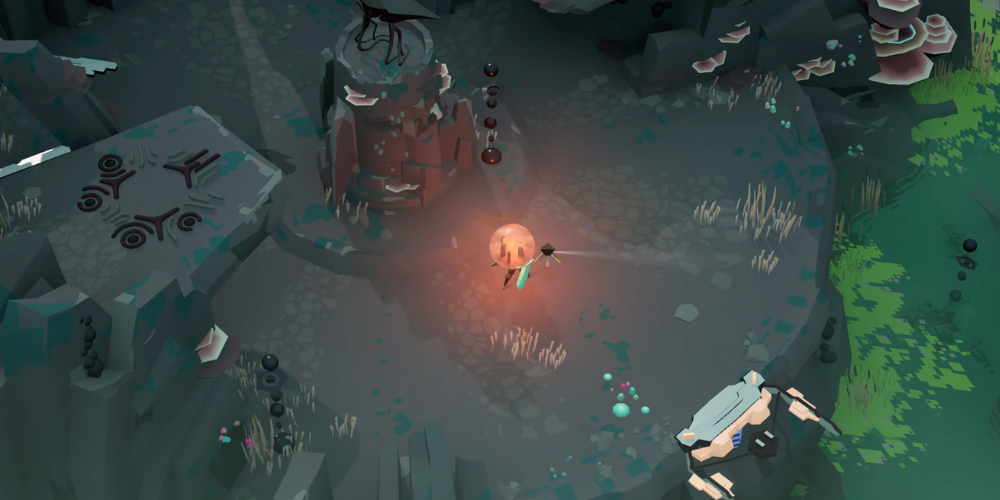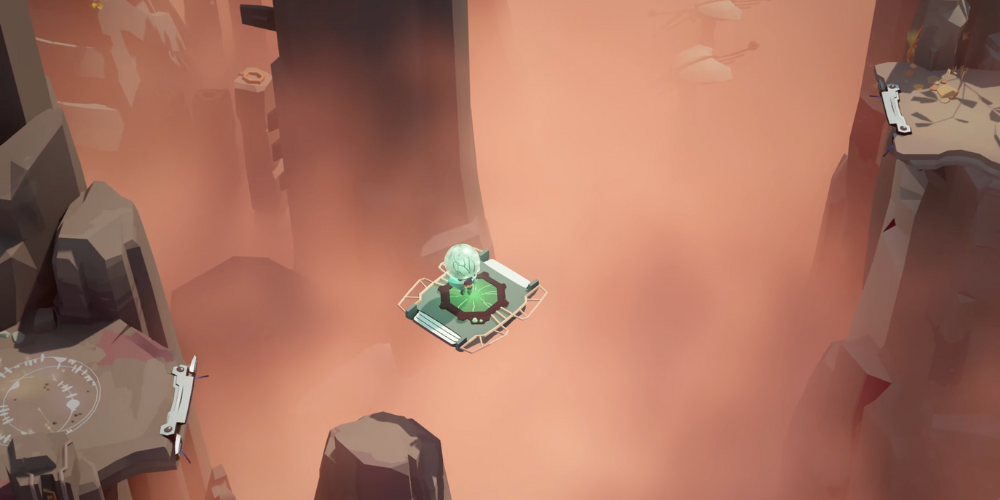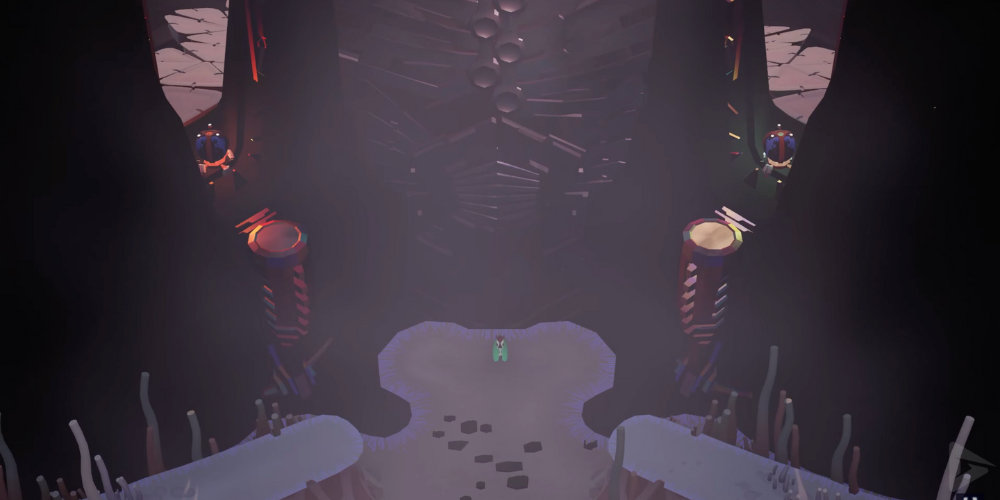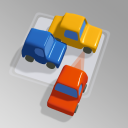How the Unique Mechanics of Cocoon Redefine Puzzle Gaming
Apr-29-2024

Puzzle games have consistently held a unique place in the hearts of gamers, providing mental challenges that are both engaging and rewarding. Amidst a plethora of puzzle games, Cocoon stands out with its innovative mechanics that challenge traditional puzzle-solving norms and offer a fresh perspective on gameplay and narrative integration. This article delves into how Cocoon redefines the puzzle gaming experience, highlighting its unique features and the impact they have on the player's engagement and problem-solving strategy.
Introduction to Cocoon’s Gameplay
Cocoon delivers a mesmerizing experience through a combination of strategic movement, environmental interactions, and story-driven objectives. At its core, the gameplay involves the player navigating through various interconnected worlds, each with its own set of puzzles and mysteries. The primary mechanic revolves around the ability to jump between worlds using a mystical orb. This not only affects the physical position of the player but also transforms the environmental elements and potential solutions to the puzzles encountered.
Orb Mechanics and World Swapping
The central feature of Cocoon is the orb mechanic, which allows players to carry and switch between orbs different worlds are housed in. Each world within these orbs has distinct environmental properties and puzzle elements. For instance, manipulating an orb might alter water levels, change weather conditions, or shift the time of day in another world, thus affecting the puzzle dynamics in significant ways. This innovative approach encourages players to think multi-dimensionally, considering not just the immediate environment but also how changes in one world might impact another.
Strategic Environmental Interaction

Unlike many traditional puzzle games where interactions are limited to more immediate objects and straightforward problem-solving, Cocoon expands this by integrating complex environmental interactions. Players might find themselves causing a rainstorm in one world to raise the water level in another or growing plants in one sphere to use them as climbing aids in a different one. This inter-world impact adds a layer of depth to the gameplay, demanding a broadened perception and strategic planning, making each puzzle a rich and dynamic challenge.
Seamless Narrative Integration
Further setting Cocoon apart is how its puzzles are seamlessly woven into the narrative. Each puzzle solved, and the world explored contributes to unfolding Cocoon’s expansive story. This integration not only enhances the immersive experience but also provides a meaningful context to the challenges presented. Players find themselves motivated not merely by the desire to solve puzzles but also driven to unravel the larger mysteries of the Cocoon universe, thus ensuring a deeper engagement with the game.
Audio-Visual Synchronization
Enhancing its unique gameplay are Cocoon’s audio and visual elements, meticulously crafted to complement each other and the game’s overall mood and themes. The visual transitions between worlds are smooth and striking, designed to reflect the significant changes the player’s actions bring about. Accompanying these visuals is a dynamic audio score that adapts to gameplay changes and follows the narrative's progression, reinforcing the emotional and psychological impact of the player's actions and discoveries.
Challenging Traditional Conventions

By breaking away from established norms, Cocoon challenges traditional puzzle game conventions. It eschews linear gameplay in favor of a more intertwined and mutable approach, encouraging exploration and experimentation. The flexibility offered by its mechanics allows puzzles to be solved in various ways, tailored to individual play styles, which is a departure from the one-solution-fits-all approach seen in many puzzle games.
Impact on Player’s Cognitive Skills
The complex puzzles and need for strategic foresight in Cocoon naturally enhance the player's cognitive abilities, turning each gaming session into a dynamic exercise in brain training. This game not only requires but actively cultivates higher-order thinking skills such as problem-solving, planning, and spatial awareness — essential skills in both gaming and real-world scenarios. Problem-solving, for instance, is constantly engaged as players encounter puzzles that require identifying patterns, hypothesizing solutions based on available data, and engaging in trial-and-error tactics.
Further complicating these challenges is the need for meticulous planning. With multiple worlds influencing each other in various ways, players must anticipate and strategize several steps ahead, similar to a chess player predicting potential future moves. Spatial awareness is similarly developed as players navigate and manipulate the game's intricate worlds, understanding and remembering spatial relationships between elements across different environments.

The requirement to handle various settings in the game significantly boosts a player's working memory and cognitive adaptability. Keeping track of past actions and their effects across various worlds helps not only solve the present puzzles but also predict future ones. This constant juggling enhances mental agility, allowing players to adapt their strategies in fluid, often unpredictable situations. Each of these cognitive benefits makes Cocoon not just an entertaining puzzle game but a mentally enriching experience that promotes critical cognitive growth in its players.
Community and Collaborative Play
While Cocoon is primarily a single-player experience, its intricate game design and complex puzzle structure have naturally led to the formation of a vibrant community. This community, thriving in online forums, social media platforms, and in-game discussion groups, brings together players who share strategies, solutions, gaming experiences, and narrative interpretations. Such interactions enrich the individual player’s experience by providing multiple perspectives on tackling challenges, thus adding depth to the gameplay.
This collaborative interaction extends beyond mere strategy sharing. Community members often engage in deep discussions about the game's narrative, theorizing on the lore and piecing together bits of the story from different worlds and puzzles. Such collaborative theorizing not only tightens player connections but also contributes to a richer, community-built narrative understanding that goes beyond the game's direct storytelling. This kind of engagement also encourages a communal form of play and discussion that transforms typically solitary puzzle-solving into a shared intellectual pursuit.

Moreover, this community support system also fosters a sense of belonging and collective achievement as players contribute to and learn from the community’s pool of knowledge and strategies. This type of setting amplifies the pleasure and participation in the game, transforming every obstacle into a collective adventure instead of a solitary struggle. Furthermore, it opens up opportunities for creating user-generated content, like guides, walkthroughs, and fan theories, further expanding the game’s life and relevance within the gaming community.
Conclusion
Cocoon redefines puzzle gaming through its unique mechanics, strategic depth, and narrative integration. It offers not just a series of challenges but a compelling journey that tests and enhances cognitive skills whilst providing a deeply engaging story. By transcending traditional gameplay mechanics, Cocoon sets a new benchmark for what puzzle games can offer and how they are experienced.
The future of puzzle games seems bright with innovations like Cocoon, which push the boundaries of what these games can achieve in terms of player engagement and challenge. With its distinctive approach, Cocoon has certainly carved a niche for itself, promising a transformative impact on the genre for years to come.







